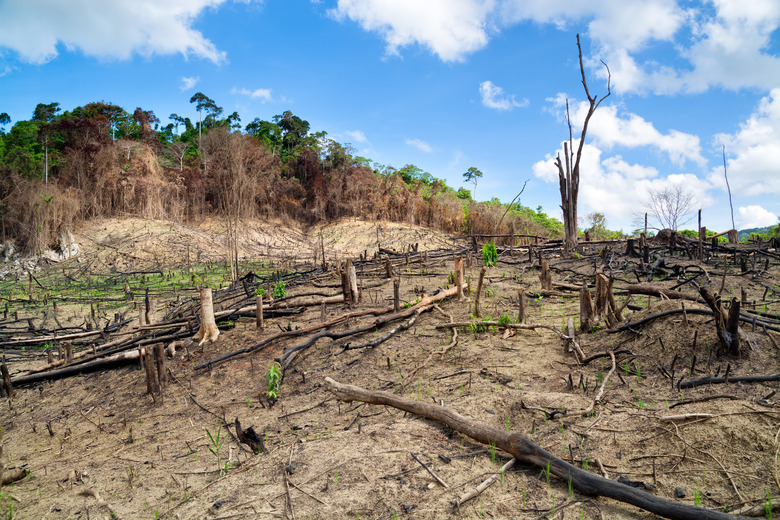The Effects Of Industrialization On Animals
Industrialization is characterized by a move from an agrarian mode of living to one in which technological innovations is dominant. Admittedly, industrialization has numerous benefits that have enabled the human species to progress and enjoy certain efficiencies. But despite these benefits, industrialization has brought with it global warming, pollution and environmental degradation. Other than humans, animals too are experiencing these detrimental industrialization effects.
Ecosystem Disruption
Ecosystem Disruption
Industrialization is a major contributor of pollution. According to the U.N. Food and Agriculture Organization, industrialization contributes approximately 6.3 billion tons of carbon dioxide to the atmosphere annually, as of 2011. Many animals such as aquatic life cannot withstand this amount of pollution, and are increasingly dying. Plants are a major source of food for animals, and they too are affected by increased atmospheric and water pollution. When plant life is threatened, animals struggle to acquire food for their own survival.
Extinction
Extinction
According to the U.S. Geological Survey, two-thirds of polar bears will disappear by 2050. But polar bears are not the only animal species threatened with extinction; others include elephants, aquatic life and even tigers. The extinction of animals can be attributed to an increase in deforestation to make way for large-scale industrial farming and human settlement. It can also be attributed to receding ice caps in the case of polar bears as a result of increasing global warming, expedited by industrialization.
Natural Habitat Loss
Natural Habitat Loss
"Managed relocation" or "assisted migration" are new phenomena affecting the animal kingdom. These two terms refer to transferring animals from their natural habitats to another habitats. This process is geared toward protecting animals from negative effects such as extinction and pollution. Scientists opposed to this process argue that it could in fact cause overcrowding in the new locations and threaten the local animal species. Additionally, relocated animals lose their families and are forced to adapt to new environments.
Human-Animal Conflict
Human-Animal Conflict
The expansion of cities propels technological advances and the need for more space for people to settle in — a primary characteristic of industrialization. Although the growth of cities may spur economic growth, it may also lead to encroachment of land that is inhabited by animals. As a result, the natural habitat of animals grows smaller and animals are forced to fight for space and food with human beings. Animals may be killed to minimize their presence in the encroached on area or they may become extinct due to the disruption in their natural environment and ecosystem.
Cite This Article
MLA
Reed, Nelson. "The Effects Of Industrialization On Animals" sciencing.com, https://www.sciencing.com/effects-industrialization-animals-8519359/. 22 November 2019.
APA
Reed, Nelson. (2019, November 22). The Effects Of Industrialization On Animals. sciencing.com. Retrieved from https://www.sciencing.com/effects-industrialization-animals-8519359/
Chicago
Reed, Nelson. The Effects Of Industrialization On Animals last modified March 24, 2022. https://www.sciencing.com/effects-industrialization-animals-8519359/
